While the U.S. might be known for its stunning coastlines and vast lakes, these beautiful waters also play host to an array of dangerous creatures. Don’t pack up your beach gear just yet, though—knowledge is power, and knowing what lurks below can make all the difference. Grab your flippers and let’s take a deep dive into 15 of the most dangerous creatures lurking in U.S. waters.
1. Lionfish: Beautiful Yet Deadly
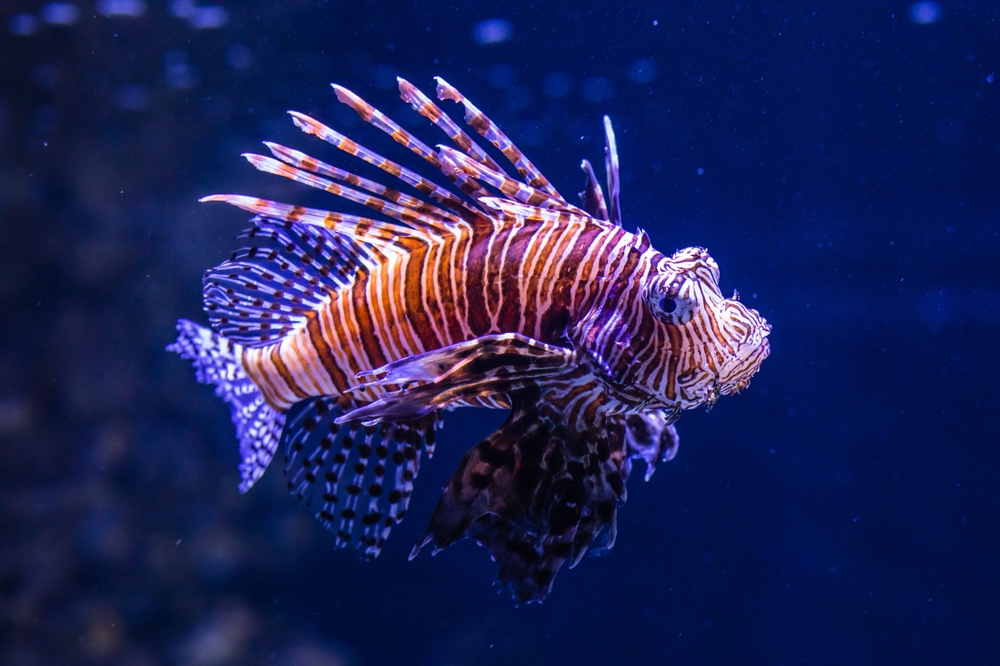
Lionfish are a prime example of beauty with a sting, quite literally. These fish, native to the Indo-Pacific, have invaded U.S. waters, particularly the Atlantic and Gulf of Mexico. According to Healthline, their venomous spines can cause extreme pain, nausea, and breathing difficulties, making them a formidable adversary for unsuspecting divers. While not typically aggressive, accidents happen when swimmers or divers come too close. Their striking appearance—striped and adorned with long, flowing spines—makes them look more like a piece of art than a threat.
The introduction of Lionfish to these waters is a concern not only because of their venom but also due to their impact on local ecosystems. They reproduce rapidly and have no natural predators in the Atlantic, allowing them to outcompete native species. Efforts are underway to control their population through organized culling and even turning them into a delicacy. That’s right—Lionfish tacos! The next time you spot one while diving, remember it’s not just a photo opportunity; it’s a reminder of the delicate balance within our marine ecosystems.
2. Great White Sharks: Not Just in the Movies
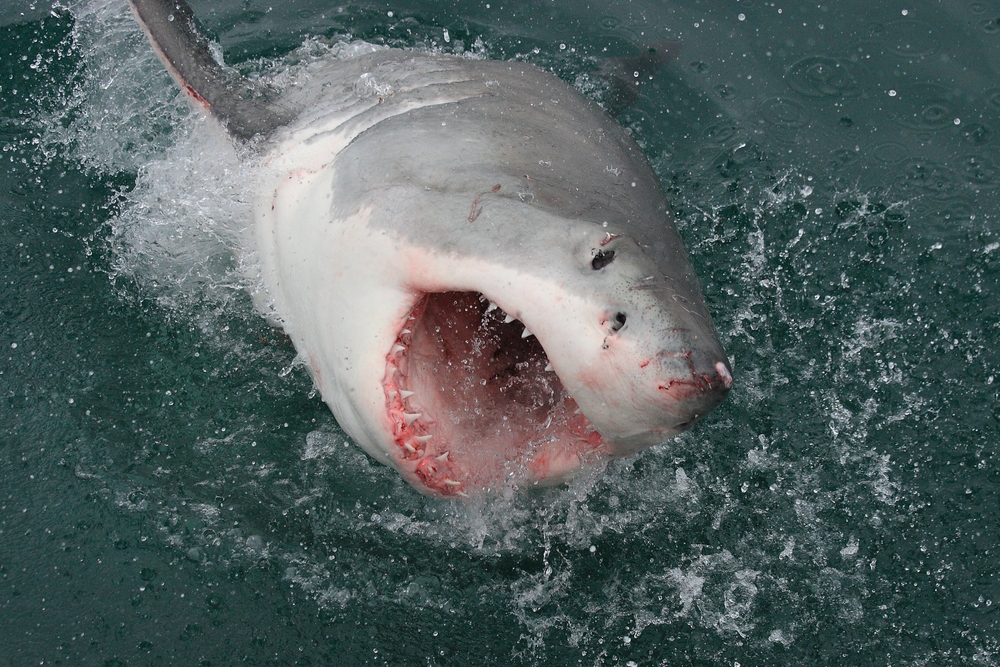
When someone mentions dangerous sea creatures, the Great White Shark often comes to mind, thanks to its starring role in countless films. These apex predators can be found along the U.S. coasts, particularly in the waters off California and the northeastern Atlantic. While attacks on humans are rare, they do occasionally happen, usually because the shark mistakes a surfer or swimmer for its usual prey—seals. According to Outdoor Life, these creatures can grow up to 20 feet long and are equipped with rows of sharp teeth, ideal for tearing through flesh. If you happen to encounter one while swimming, it’s best to stay calm and slowly back away.
There are plenty of misconceptions about Great Whites, primarily fueled by their portrayal in media. In reality, these sharks are not the mindless killers they are often depicted as. They’re curious and sometimes bump into objects or people to investigate. Protecting their habitats and understanding their behavior is crucial for coexisting safely with these magnificent creatures. Shark attacks have actually decreased over the years, as more people become educated about how to reduce the risk of encounters. It’s a testament to the power of education over fear.
3. Box Jellyfish: The Ocean’s Transparent Terror
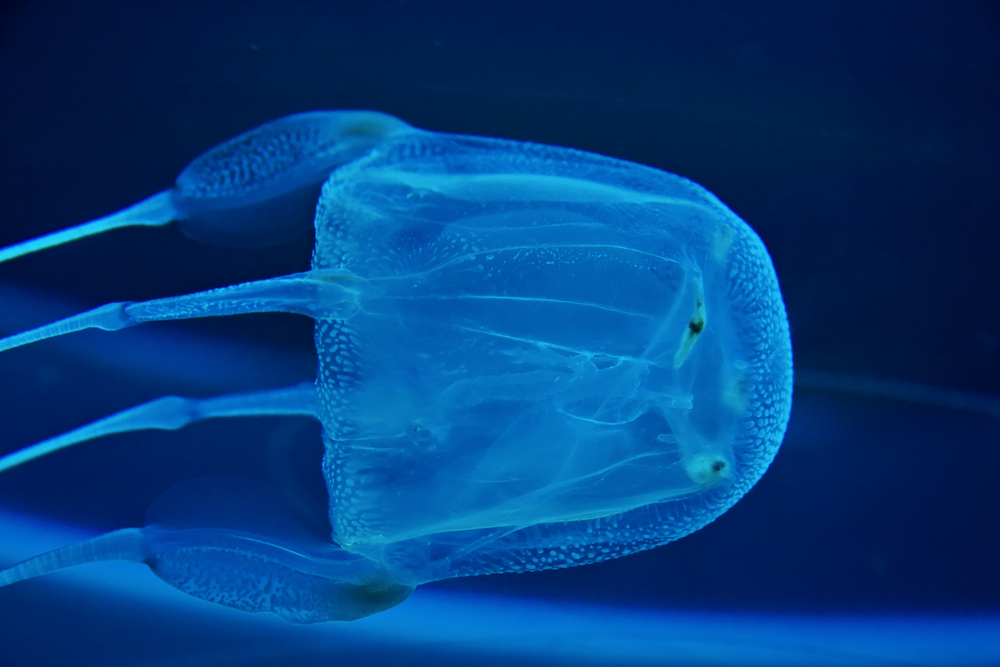
Though not native to U.S. waters, the occasional appearance of the Box Jellyfish in places like Hawaii is enough to make it onto our list. Known for their incredibly potent venom, these jellyfish are the true “ghosts” of the sea. Their tentacles can reach up to 10 feet long, and the stings are not only painful but can be lethal. Touching one can lead to heart failure, paralysis, and even death if not treated immediately. The sting causes a surge of pain, akin to being burned with hot oil.
Box Jellyfish have a nearly transparent appearance, making them hard to spot in the water—a feature that adds to their danger. Victims who survive an encounter often bear physical and psychological scars for years. When visiting areas where these jellyfish may be present, it’s wise to heed local warnings and swim in designated safe zones. Many beaches have vinegar on hand, which can help neutralize the venom in case of a sting. But the best advice? Always keep your eyes peeled and respect the signs.
4. Stingrays: Graceful Yet Best Left Alone
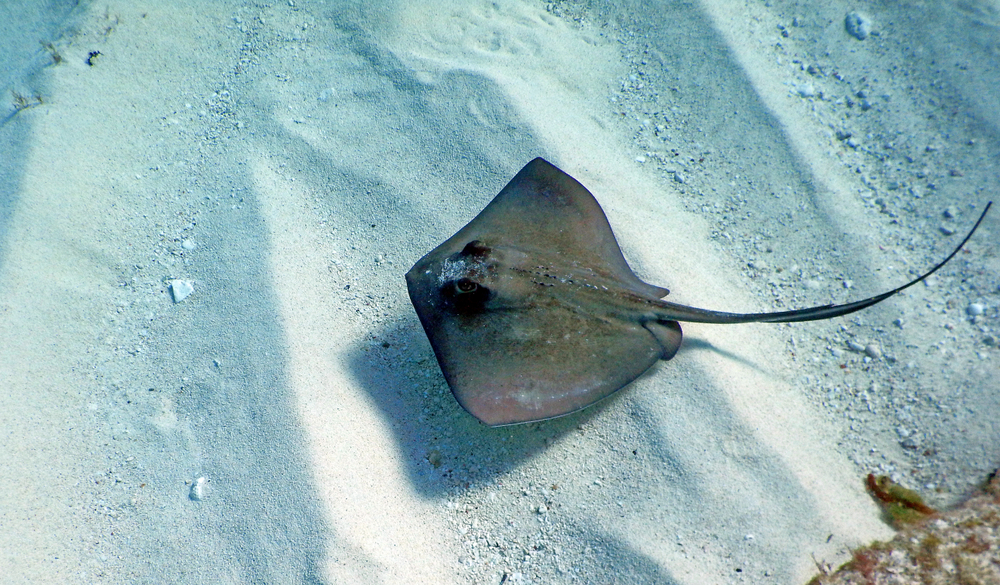
Stingrays are often seen gliding gracefully along the ocean floor, and while they usually aren’t aggressive, they can become dangerous if provoked. Their notorious venomous barb can cause severe pain and, in rare cases, more serious complications. Most stingray injuries occur when swimmers accidentally step on them, prompting a defensive sting. The best way to avoid this is by shuffling your feet through the sand, alerting them to your presence. It’s a small action that can prevent a painful encounter.
Stingray injuries, while usually not life-threatening, shouldn’t be taken lightly. Immediate medical attention is crucial to prevent infection and manage pain. These creatures are an important part of the marine ecosystem, serving as both predators and prey. By respecting their space and being cautious, humans and stingrays can coexist peacefully. So the next time you’re wading through the shallows, keep the stingray shuffle in mind and appreciate these fascinating creatures from a safe distance.
5. Bull Sharks: The Versatile Swimmers
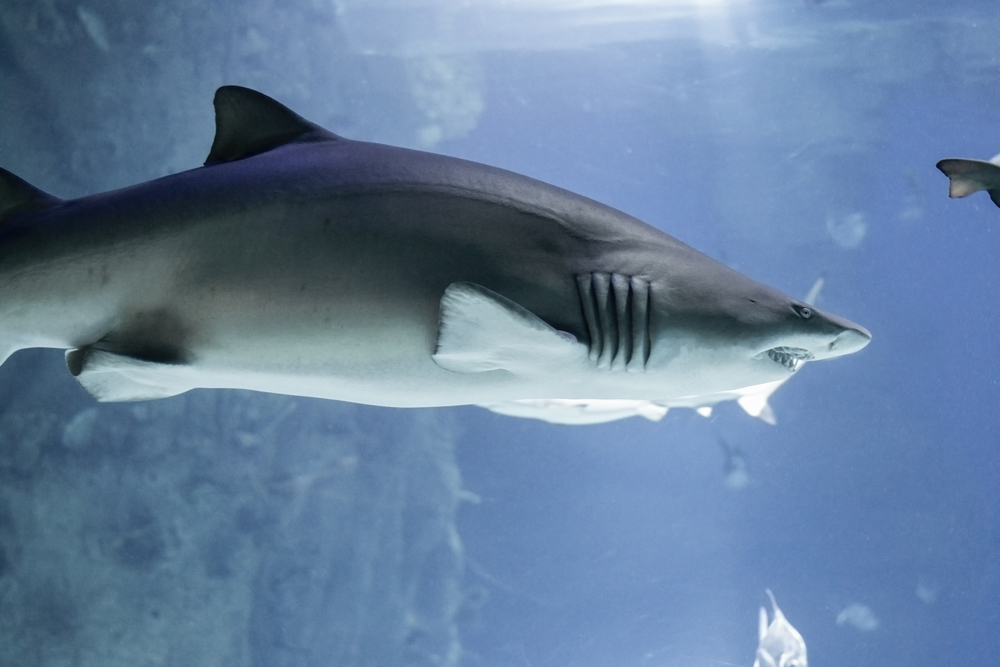
Bull Sharks are particularly unique among their shark cousins as they can thrive in both salt and freshwater. This adaptability means they can be found far upriver, miles from the ocean, like in the Mississippi River. With a reputation for aggression, Bull Sharks are involved in a significant number of attacks on humans. They’re known for ramming their prey before biting, a tactic that makes them particularly formidable. Their presence in both ocean and freshwater environments increases the likelihood of encounters with humans.
Bull Sharks are opportunistic feeders, which makes them unpredictable. This unpredictability, combined with their powerful build, has earned them a fearsome reputation. As with other sharks, understanding their behavior and respecting their space is key to avoiding negative encounters. Many researchers are dedicated to studying Bull Sharks to better understand their patterns and minimize human-shark conflict. While they’re certainly not the friendliest among sea creatures, they’re an important part of the aquatic food chain.
6. Blue-Ringed Octopus: Small but Mighty
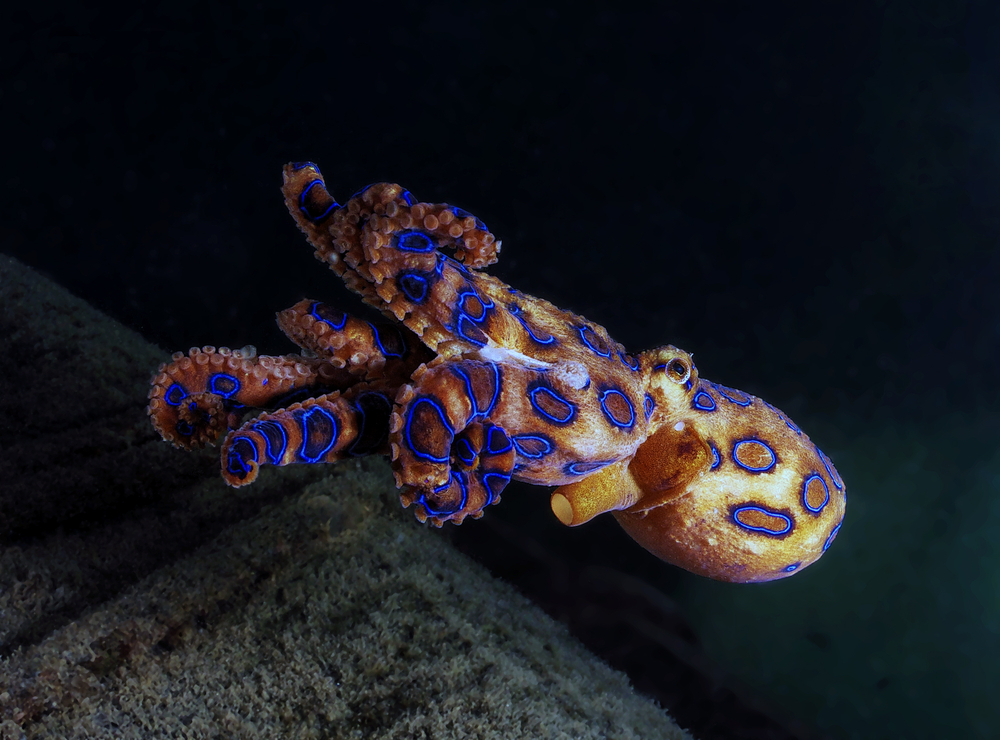
The Blue-Ringed Octopus may be small, but its venom packs a serious punch. Found occasionally in U.S. waters, this tiny creature is one of the ocean’s most venomous animals. Its bite can cause paralysis and even death within minutes if not treated promptly. The bright blue rings that give this octopus its name serve as a warning to potential predators—and to humans. Despite their deadly venom, these octopuses are not aggressive and usually only bite when handled or threatened.
Their venom contains tetrodotoxin, a substance for which there is no known antidote. It blocks nerve signals, leading to muscle paralysis and, eventually, respiratory failure. Despite their danger, Blue-Ringed Octopuses are fascinating creatures that play a vital role in their ecosystem. They’re a reminder of the power and mystery of the ocean, and why it’s best to observe rather than interact with wildlife. When it comes to this little octopus, admire from a distance and leave the handling to the professionals.
7. Portuguese Man O’ War: The Ocean’s Drifting Danger
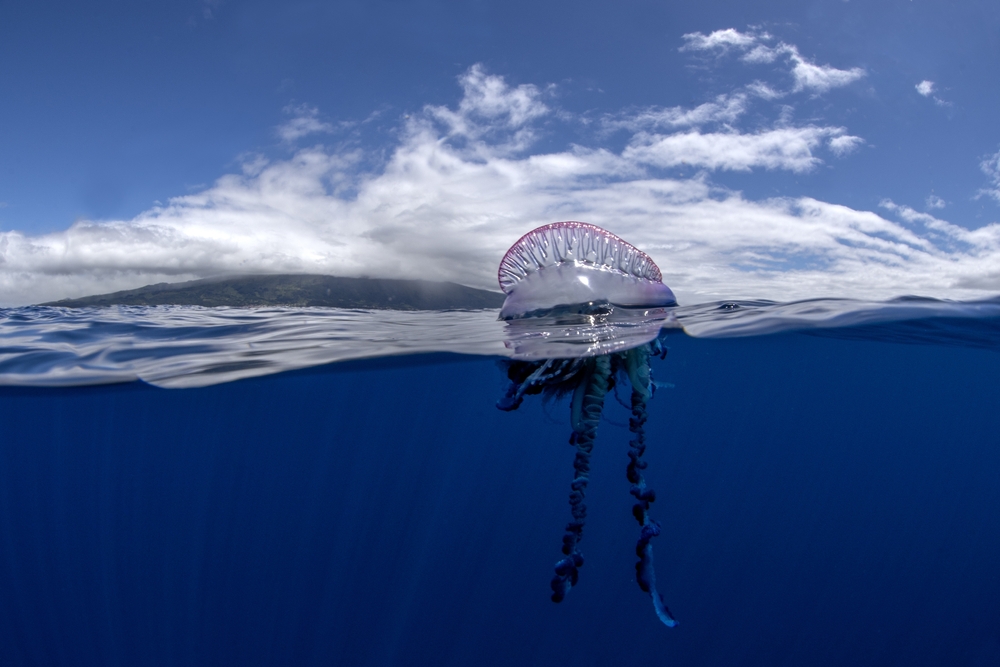
Often mistaken for a jellyfish, the Portuguese Man O’ War is actually a colonial organism made up of specialized individuals working together. Its long tentacles can extend up to 165 feet, and they deliver a painful sting that can lead to welts and more severe reactions in some individuals. These creatures are found floating on the surface of warm ocean waters and are often pushed to shore by winds and currents. Their translucent blue and purple coloration makes them beautiful yet deceivingly dangerous.
While a Man O’ War sting is rarely fatal, it can cause severe pain and discomfort. The best way to avoid a painful encounter is to steer clear of them, both in the water and on the beach, as their tentacles can still sting even when detached. First aid for stings involves rinsing with vinegar or saltwater—not freshwater—and removing any tentacles with a stick or towel. The next time you see one washed up on the beach, remember it’s not a jellyfish, and give it some space. They might be a sight to behold, but they’re best appreciated from afar.
8. Sea Snakes: Slithering Through the Waves
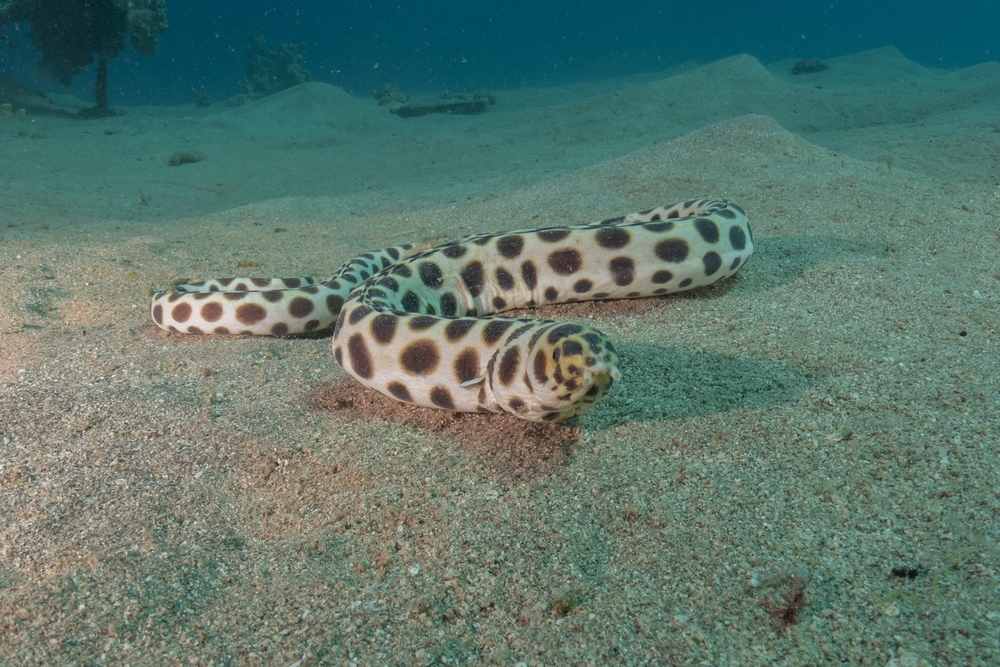
Sea Snakes may not be the first creatures that come to mind when you think of U.S. waters, but they do occasionally make their way into areas like the Gulf of Mexico. Known for their highly potent venom, these reptiles are generally not aggressive towards humans. However, their bites can lead to serious complications or even death if not treated quickly. They’re typically found in tropical waters, often near coral reefs where they hunt fish and eels. With their paddle-like tails, they are well-suited for an aquatic life.
Despite their venomous nature, Sea Snakes are quite shy and usually avoid human contact. Most bites occur when fishermen accidentally catch them in nets or when divers provoke them. While they’re not a significant threat to beachgoers, it’s wise to be cautious and give them space if encountered. Their presence indicates a healthy marine ecosystem, and they play a crucial role in controlling fish populations. Observing these fascinating creatures from a distance allows us to appreciate their place in the oceanic food web without putting ourselves at risk.
9. Alligator Gar: Freshwater’s Ancient Giant
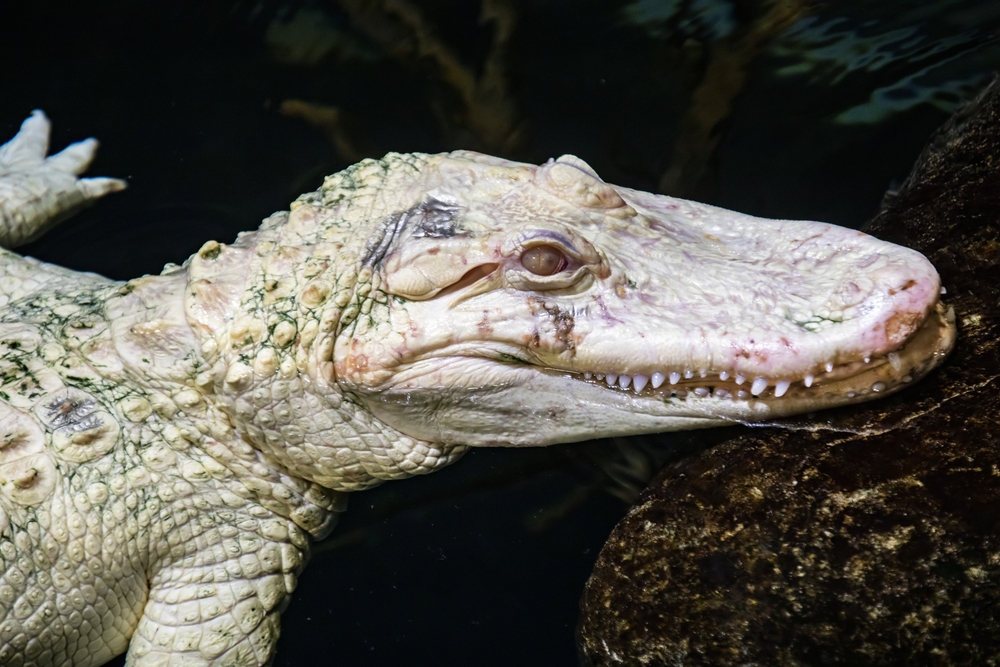
The Alligator Gar is a fish that looks like it swam straight out of the prehistoric era. Found in the freshwater rivers and lakes of the southern United States, this giant fish can grow up to 10 feet long and weigh over 300 pounds. Its sharp teeth and powerful jaws make it a top predator in its habitat. While attacks on humans are extremely rare, the Alligator Gar’s appearance and size can be intimidating. These fish are fascinating remnants of a bygone era, with lineage tracing back to the time of dinosaurs.
Despite their fearsome appearance, Alligator Gars usually pose little threat to humans. They’re more likely to be threatened by humans, as they’re often targeted in sport fishing. Their populations have been impacted by habitat loss and hunting, leading to conservation efforts in some areas. These ancient creatures are a reminder of the rich biodiversity found in U.S. waters. Appreciating them for their role in the ecosystem helps ensure they remain a part of our natural heritage for generations to come.
10. American Alligator: The Swamp’s Stealthy Predator
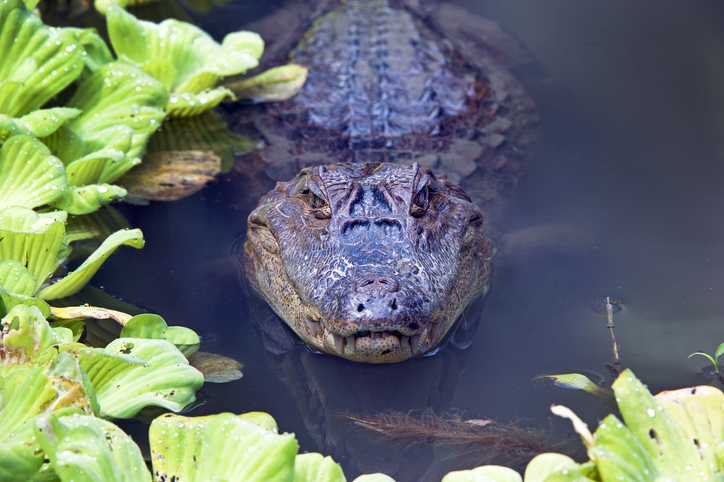
While not confined to just water, the American Alligator often inhabits freshwater environments like swamps, rivers, and lakes across the southeastern U.S. These reptiles can grow over 11 feet long and are known for their powerful bite, capable of crushing bones. Humans are not typically on their menu, but they will attack if provoked or if they feel threatened. Their ambush tactics and stealth make them effective hunters, able to stay submerged with only their eyes and nostrils visible above water.
Alligator attacks on humans are rare, but it’s essential to exercise caution when in their habitat. Feeding alligators is particularly dangerous as it can lead them to associate humans with food, increasing the likelihood of aggressive encounters. Respecting their space and keeping a safe distance is critical for coexistence. These ancient reptiles are a vital part of the ecosystem, controlling prey populations and helping to maintain a balanced environment. Their presence in the wild is a testament to the rich biodiversity of U.S. wetlands.
11. Stonefish: The Ocean’s Camouflaged Assassin
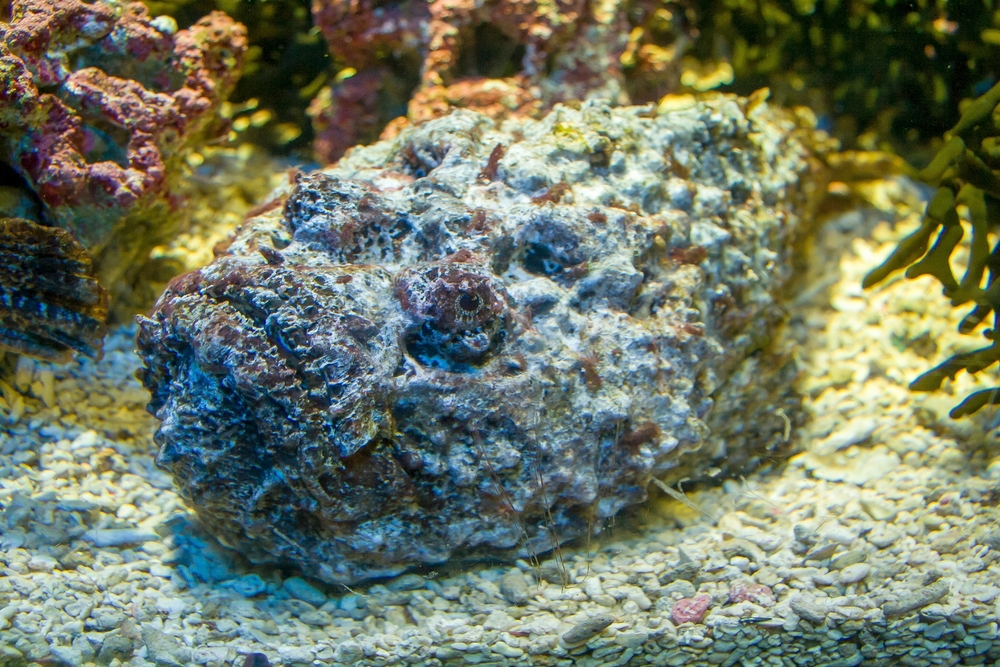
Stonefish are masters of disguise, blending seamlessly into the ocean floor where they lie in wait for prey. Found off the coasts of Florida and in the Gulf of Mexico, these fish are among the most venomous in the world. Their venom is delivered through spines on their back, which can cause excruciating pain, swelling, and even paralysis. Stepping on one of these camouflaged predators is the most common way humans get injured. The best way to avoid an encounter is by wearing water shoes and being cautious in rocky or coral areas.
Despite their venomous nature, Stonefish are not aggressive and will not attack unless provoked. They feed on small fish and crustaceans, and their camouflage is their primary defense mechanism. Medical attention is crucial if stung, as the venom can lead to serious complications. Hot water immersion is a common first aid treatment to neutralize the venom’s effects. These fascinating creatures highlight the diversity and complexity of marine life that inhabit U.S. waters.
12. Moray Eels: The Hidden Hunters
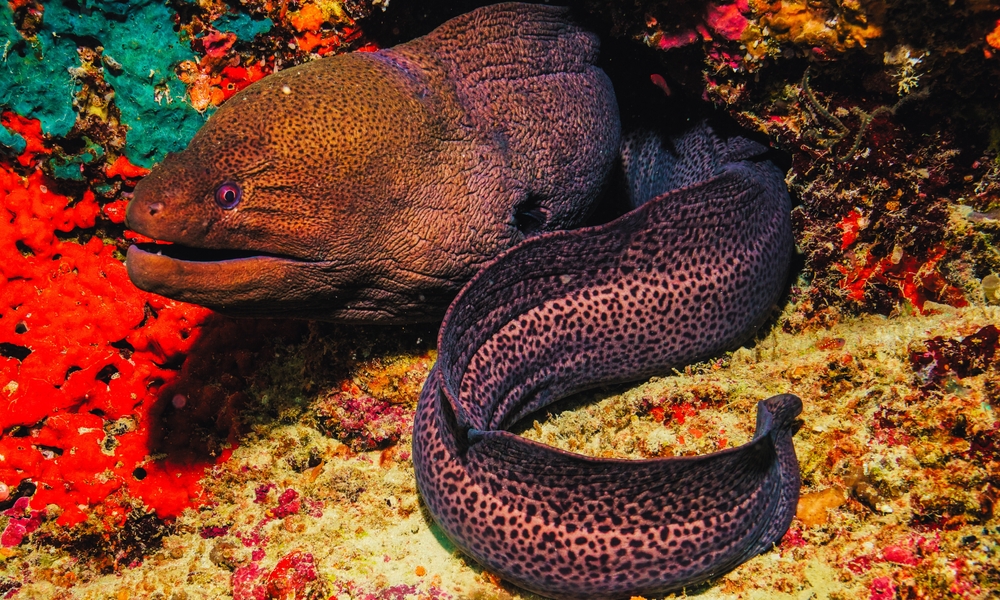
Moray Eels often lurk in crevices and under rocks, waiting to ambush their prey with quick, snapping bites. Found in coastal waters of the Atlantic Ocean, particularly in Florida and the Gulf, these eels have powerful jaws and sharp teeth. They’re more likely to bite humans if they feel threatened or cornered. Despite their fearsome appearance, Moray Eels are usually shy and prefer to avoid contact with divers and snorkelers. However, reaching into crevices or provoking them can lead to a painful bite.
These eels play a crucial role in their ecosystem, keeping fish populations in check. While their appearance might be intimidating, they are important predators and part of the marine biodiversity. Divers can safely observe Moray Eels by keeping a respectful distance and avoiding disturbing their hiding spots. Their unique physical adaptations make them fascinating creatures to watch. Understanding their behavior and respecting their space ensures a safe underwater experience for both humans and eels.
13. Barracudas: The Sleek Speedsters
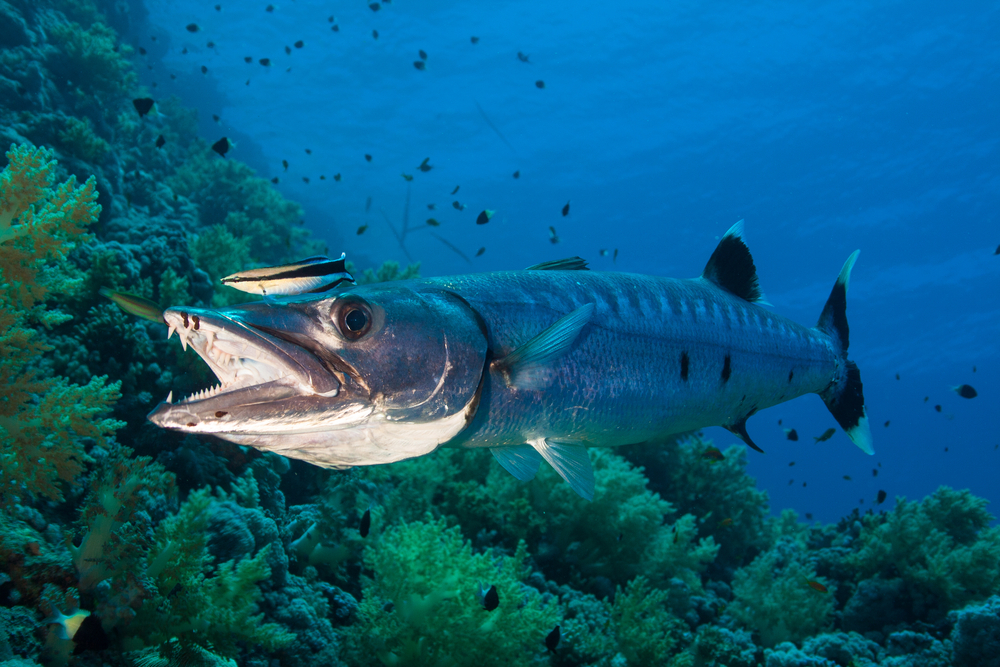
Barracudas are known for their speed and agility, often seen darting through the waters of the Atlantic and Gulf Coasts. With razor-sharp teeth and a strong, elongated body, they are formidable hunters. While attacks on humans are rare, their curious nature can lead them to investigate shiny objects, mistaking them for food. Swimmers and snorkelers wearing jewelry are particularly at risk of attracting their attention. Despite their fearsome reputation, barracudas are an important part of the marine ecosystem.
Most interactions with barracudas are harmless, as they are more interested in fish than humans. Avoiding flashy jewelry and making slow, deliberate movements can help prevent unwanted encounters. These sleek fish are fascinating to observe from a safe distance, showcasing the speed and agility that make them effective hunters. Barracudas are vital to maintaining the balance of marine life, and respecting their space helps ensure safe coexistence. Next time you’re in their waters, remember to give these speedsters the respect they deserve.
14. Carcharhinus Sharks: The Coastal Predators
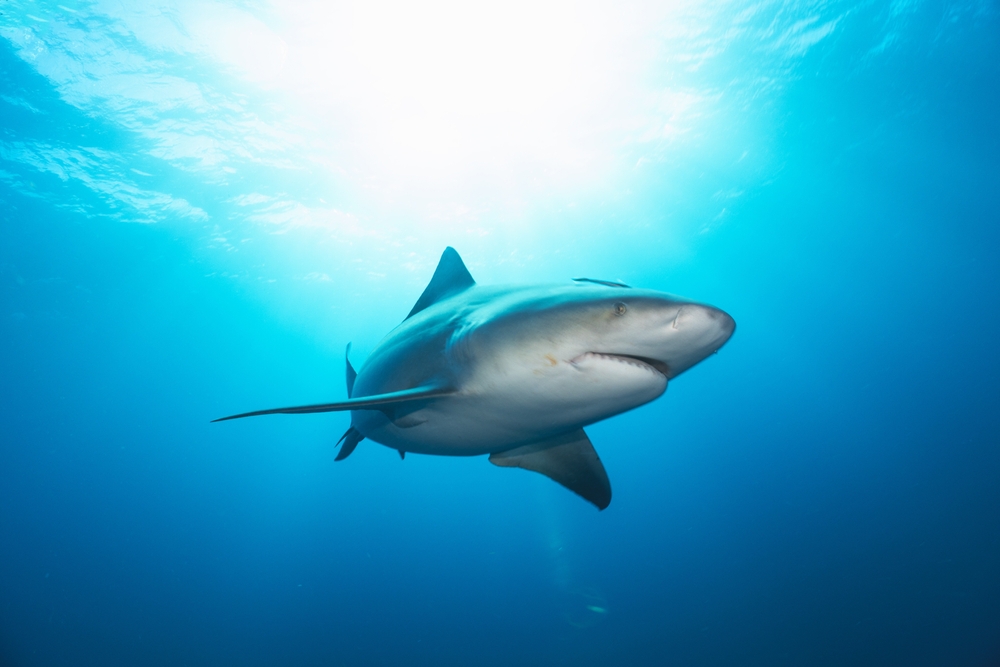
Carcharhinus Sharks, including species like the Tiger Shark and Blacktip Shark, are commonly found in U.S. coastal waters. These sharks are versatile predators, feeding on fish, crustaceans, and occasionally mammals. While they rarely target humans, their increasing proximity to popular swimming areas has led to occasional attacks. Their hunting techniques are swift and efficient, relying on bursts of speed and powerful jaws. Understanding their behavior is key to reducing the risk of encounters.
Despite their occasional presence near beaches, Carcharhinus Sharks play a crucial role in regulating marine ecosystems. They help maintain healthy fish populations and contribute to biodiversity. When swimming in areas known for shark activity, it’s wise to heed local warnings and follow safety guidelines. The presence of these sharks highlights the need for responsible interaction with marine environments. By respecting their space and understanding their role, we can coexist peacefully with these remarkable creatures.
15. Sea Urchins: The Spiky Sentinels
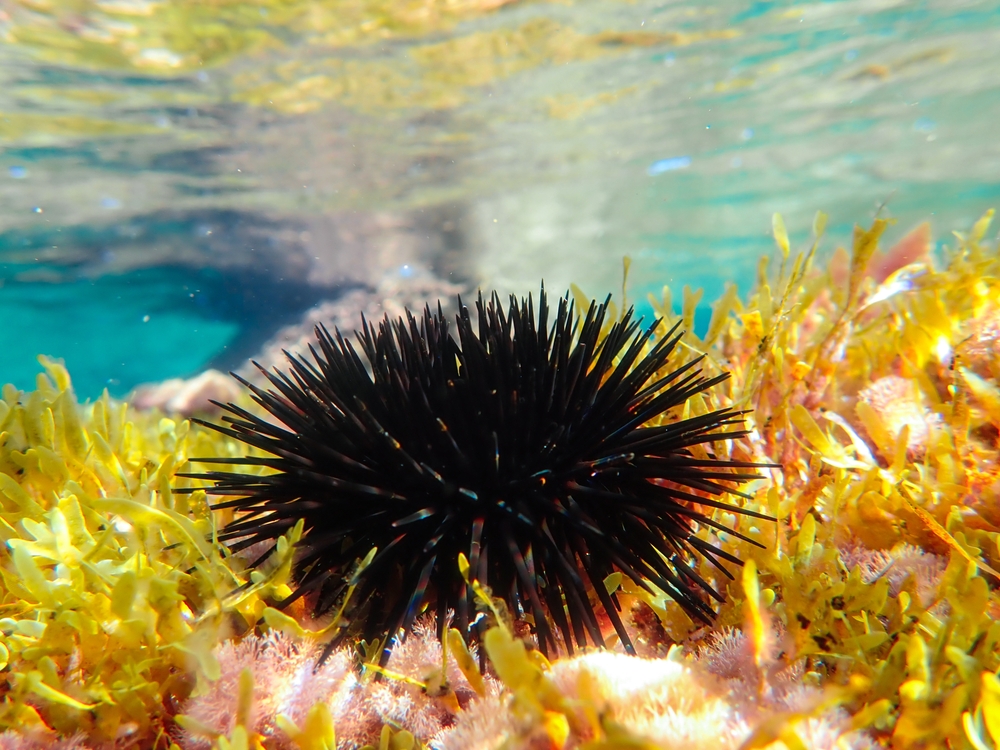
While not as dramatic as some of the other creatures on this list, sea urchins pose a significant threat to the unsuspecting beachgoer. Found along the Pacific and Atlantic coasts, these spiky creatures hide among rocks and coral reefs. Stepping on a sea urchin can result in painful puncture wounds and potential infection. Some species also have venomous spines, which can cause severe pain and swelling. The best way to avoid an encounter is to watch where you step and wear protective footwear in rocky areas.
Sea urchins play an important role in the marine ecosystem, feeding on algae and contributing to the health of coral reefs. While they might seem like a nuisance, they are essential to maintaining balance in their environment. If you find yourself on the receiving end of their spines, immediate medical treatment is advised to prevent complications. These creatures remind us of the need to tread carefully and respect marine habitats. By being mindful of our surroundings, we can enjoy the beauty and diversity of U.S. waters without incident.
